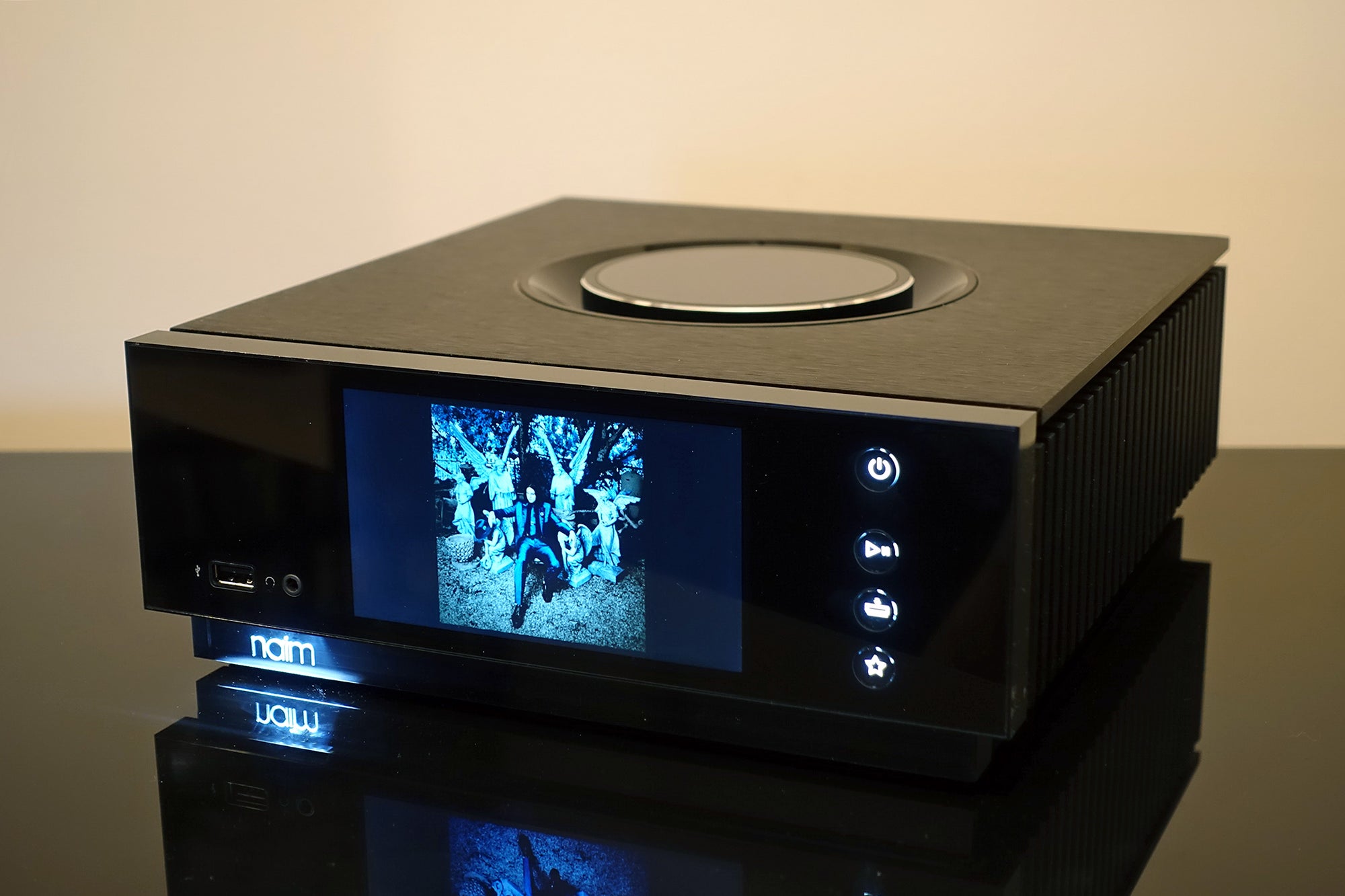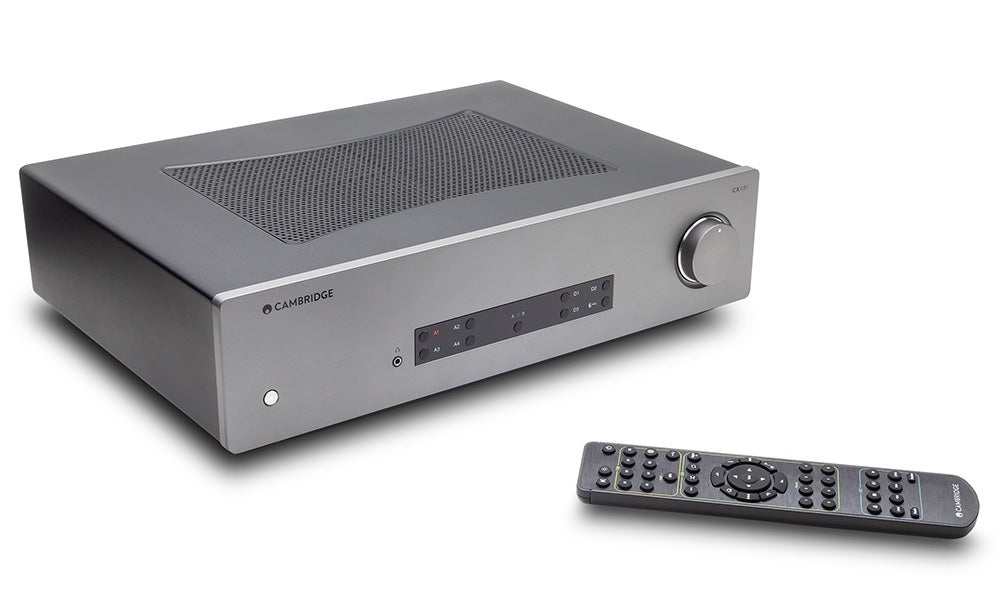Panasonic SC-PMX802 Review
A versatile micro system that's fond of analogue and digital sources
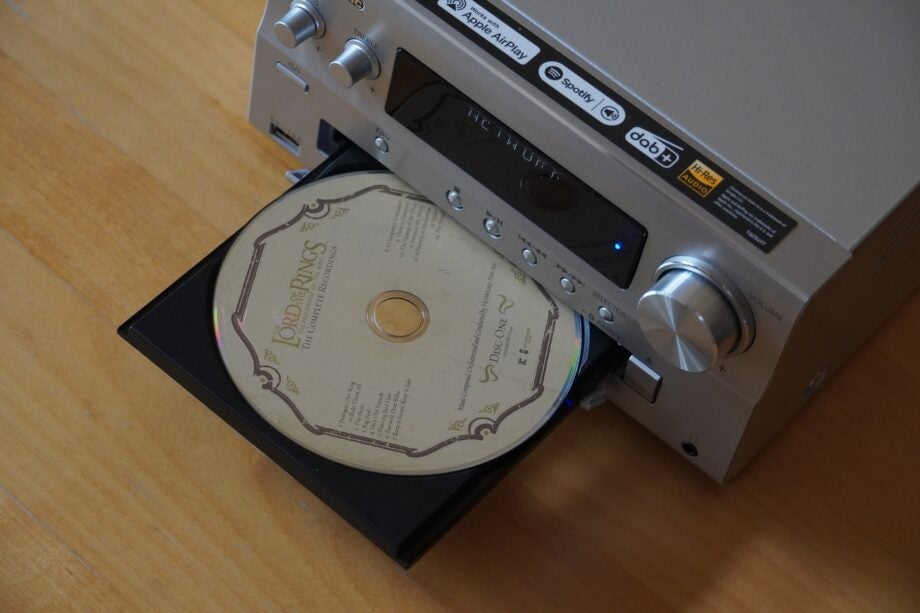

Verdict
A versatile micro system capable of playing your shiny plastic discs as well as digitally streaming tracks, the PCMX802 is an eloquent performer – although it could shore up its ‘Hi-Res’ ambitions if it had access to more features.
Pros
- Warm, appealing sound
- Versatile player
- Takes up little space
Cons
- No MQA, aptX-HD, LDAC support
- Not recommended for use with other speakers
Availability
- UKRRP: £499
- USATBC
- EuropeTBC
- CanadaTBC
- AustraliaTBC
Key Features
- Chromecast built-inStream Hi-res audio from laptops, smartphones and tablets
- CD playbackCan play shiny plastic discs
- JENO engineEnables playback of Hi-Res audio
Introduction
Look online (or in those things they call newspapers) and recent reports suggest CDs are out, streaming is in, digital downloads are somewhere or other, and vinyl has spun around enough times to be back in fashion.
It’s into this often-capricious market that Panasonic launches its SC-PMX802 hi-fi system, catering to those who are hanging on to their shiny plastic discs (and still listening to radio); but accommodating streaming through AirPlay 2 and Chromecast.
It’s a hi-fi system that bends an ear to the past, with a focus on the present – but the question is will we still be using systems such as these in the future? If a hybrid of streaming and physical media that takes up little space fits your needs, this versatile system looks to make the case that micro hi-fi systems will be around for a while yet.
Design
- Compact size
- Disc tray for CDs
- LCD panel
Panasonic’s system is, well, miniature in size. It takes up less space than a stereo amplifier or music streamer would on their own, measuring 114 x 221 x 267mm (HWD) before you include the speakers.
The silver finish gives the unit a sophisticated look – it also comes in black. On the fascia are two small control knobs, bass and treble, and a volume dial either side of a display. This shows basic line readings – ‘CD’, ‘Network’, ‘AirPlay’, running time – with a blue light that I suppose is there to indicate that it’s on. Regardless, it’s easy to read up close and big enough to see from a distance.
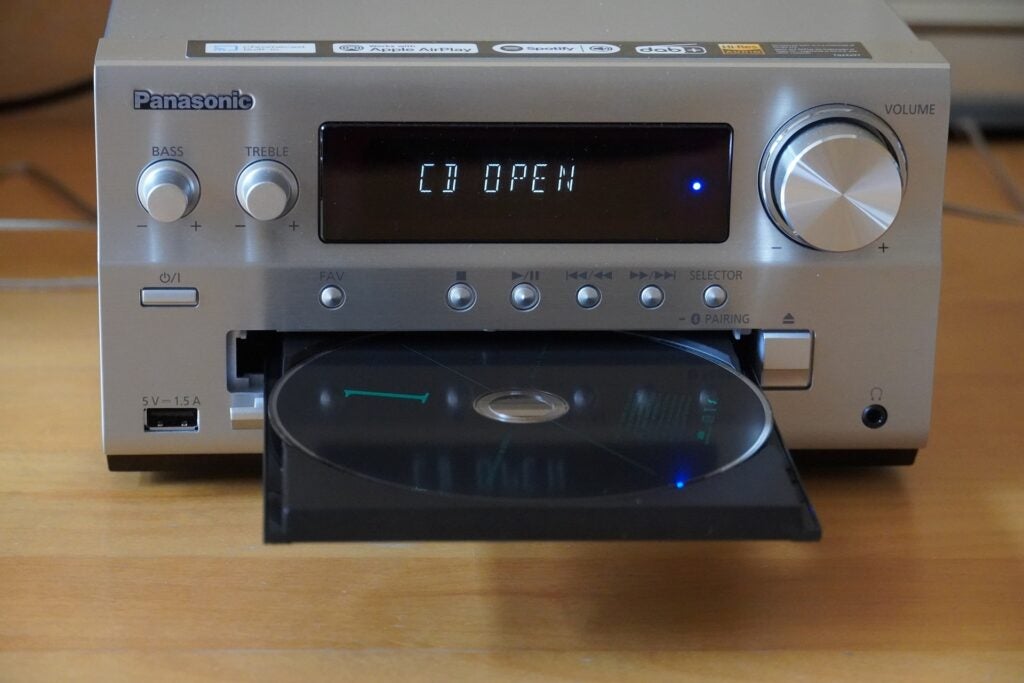
Also on the front are playback controls, and below them is a CD disc tray and eject button. Loading discs doesn’t take long, nor do they make much noise when being read. With vents on either side and one on top of the SC-PMX802 to push out heat, Panasonic recommends placing the speakers at least 10mm away from the main unit for ventilation, so you can keep the speakers tucked in tight. The unit gets moderately warm with use, which is perfectly fine.
The speakers are compact units with a nice black wood finish and a baffle that can be magnetically attached (or detached) to reveal the drive units. The system is optimised with these speakers in mind, and if you’re thinking of adding a pair they needed to be rated at 3 – 16ohms. Rather than a visual statement it’s a neat and tidy one, and the cable that connects the various components is thin and unobtrusive, like the one that comes with the larger Q Acoustic M20 HD system.
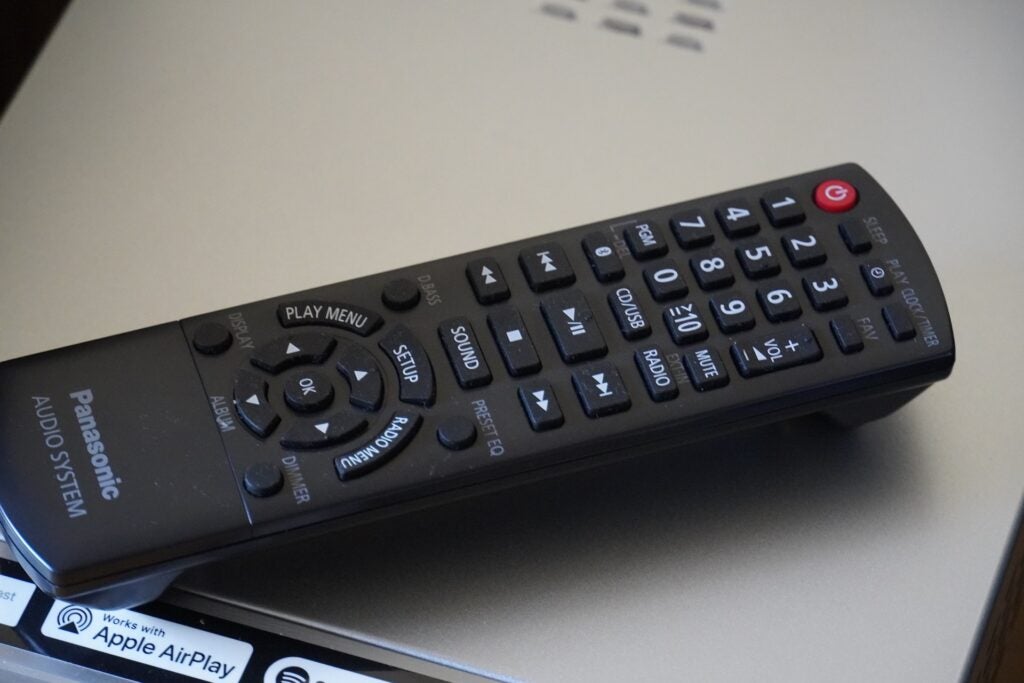
The remote is of the type Panasonic ships with its Blu-ray players, although smaller and without an ‘eject’ button. I suppose leaving that out makes sense, really, as if you’re going to get up and change the disc, why bother to have an eject button on the remote? It doesn’t stop me from picking up the remote and looking for the eject button every single time, though. Old habits die hard.
The remote uses line of sight and is tightly packed for buttons, but not in a way that can frustrate with Panasonic’s Blu-ray remotes. The response from button presses aren’t too rigid and stiff, either.
Features
- Built-in Chromecast
- Hi-Res audio capability
- Technics JENO engine
- AAC limit for Bluetooth streaming
Panasonic pushes the SC-PMX802 as a versatile network player, and with AirPlay 2, Chromecast and Bluetooth, there are options for iOS and Android users to stream. Network set-up is through Google Home, with DLNA streaming, multi-room within the Google ecosystem, as well as Google Assistant – although that isn’t built-in.
Downloading firmware updates took some time – the initial update took well over the 20 minutes mentioned in the manual – but, eventually, the unit and Google Home synched up with one another on the second attempt.
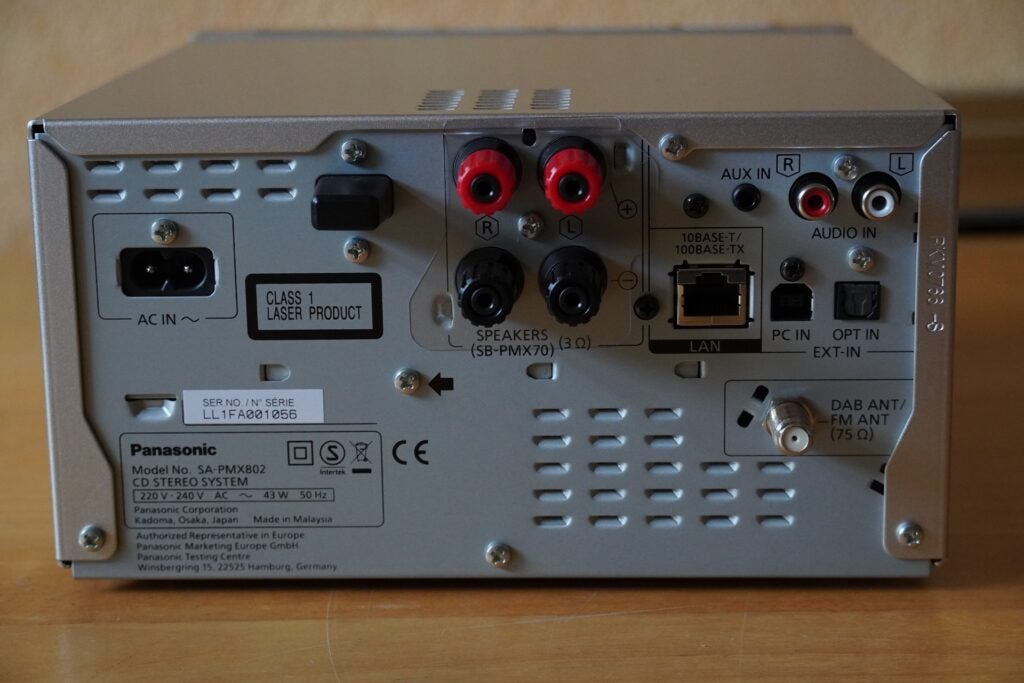
Chromecast supports audio up to 24-bit/96kHz, presenting the Panasonic SC-PCMX802’s Hi-Res credentials – at least wirelessly. There’s no MQA support and, like other Chromecast-enabled devices, the Tidal Hi-Fi tier is downscaled to CD quality. Bluetooth is only v4.2, and playback hits a ceiling of AAC; a lack of aptX-HD or LDAC slightly disappoints in light of those Hi-Res aspirations.
Otherwise, there’s a 3.5mm jack for headphones and a USB 2.0 input that allows for music playback up to 24-bit/192kHz and DSD 5.6MHz. That same USB input also supports WAV, FLAC, AAC and MP3 files. Around the rear are speaker terminals, AUX RCA in, Audio in, Ethernet, and an optical out that opens up the SC-PMX802 to other devices such as portable audio players, PC, DVD player, and so on.
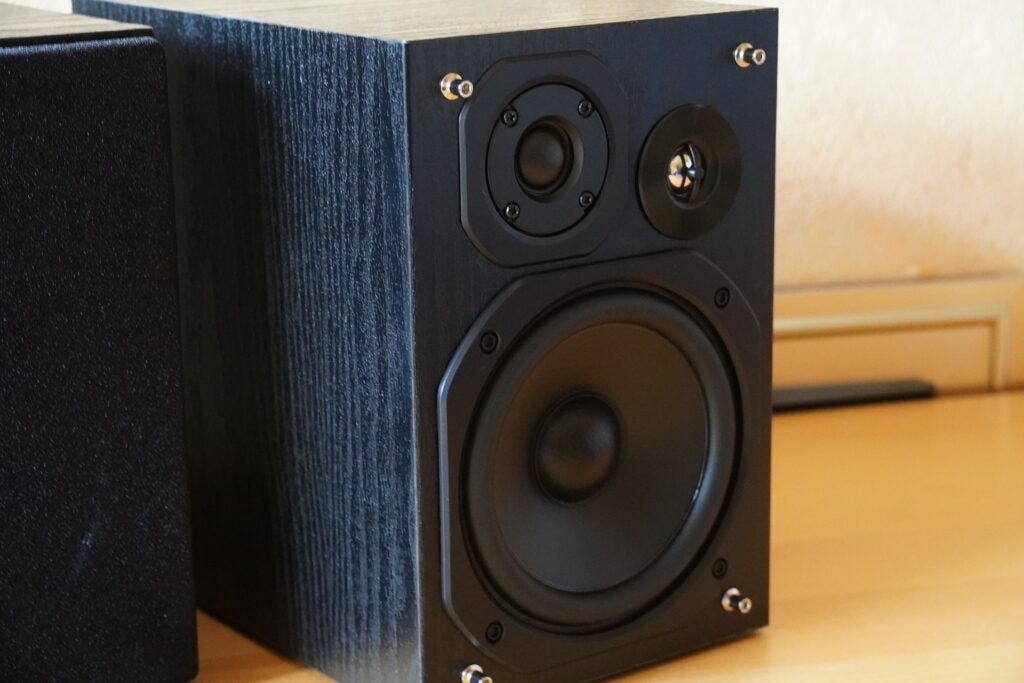
Running the show is the JENO Engine – Technics’ top-of-the-line offering – while the three-way speakers feature a 14cm cone woofer, 1.9cm silk dome tweeter and a 1.5cm piezoelectric super tweeter. I’m not familiar with the latter, but it appears to offer a more efficient high-frequency performance.
Still listen to the real wireless? The Panasonic SC-PCMX802 has DAB/DAB+ support, with an aerial among the included accessories. Presets for radio and programmable playback – CD and USB – can be performed on the remote.
Sound Quality
- Confident, expressive sound
- Bass lacks extension
- Smooth vocal delivery
Since Panasonic recommends the best speakers for the system are the ones that come with it (there are claims of damage to the amplifier and even causing a fire), you’re rather locked into the system as it comes.
Nevertheless, the SC-PCMX802’s performance grew on me over the course of testing, suggesting you’ll want to bed this system in over a period. At first, I’d have described the Panasonic as sounding slightly broad and soft, lacking a degree of definition; the treble relaxed and bass a little underwhelming. Over time a slightly warmer, richer character came into focus, and with tweaks to bass and treble, a more pleasant and engaging listening experience was possible across a range of sources.
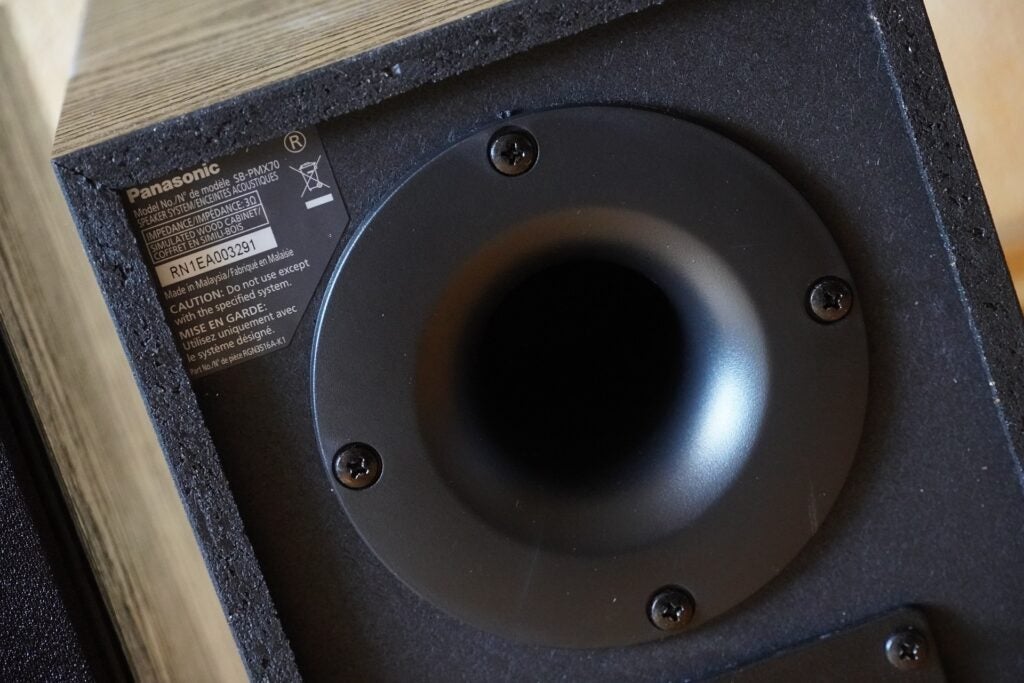
There are limits to the system’s bass prowess, however. The SC-PCMX802 doesn’t have the extension to really add welly to low frequencies even with the rear bass port firing against a wall, and tweaking the bass (-4/+4) is welcome but going full beans leads to a slight hardness to the unit’s bass output, which offers some more punch if not necessarily more depth.
Fiddling with the treble brings out some more refinement and some perceptible sharpness to high-frequency tones. Play the theme from the Hawkeye Disney+ show (Tidal, Chromecast), and the twinkly Christmas tones have a slightly higher pitch than they did pre-tweaking.
The system’s sense of dynamism is effectively parlayed in John Williams’ The Force Awakens score, bringing out the flow of Williams’ brass and string writing in the Main Theme and The Attack on the Jakku Village.

The Ballad of Howie Bling from Daniel Lopatin’s Uncut Gems soundtrack is full of synthesized instruments that evoke a dreamy 80s feel, and the micro system captures that tone well. It proves a good fit across a range of musical genres, with the ballad described with spaciousness as voices flit here and there through the soundstage, while the snare drums snap with crispness, and the warmth of the speaker’s sound generates a cozy, rich sound.
A consistent feature of the SC-PCMX802’s performance is the way each instrument is separated from the other, existing on its own in a stereo image that’s well arranged and bigger than the confines of the speakers themselves. There’s a richness to the Panasonic’s presentation that doesn’t get in the way of vocal clarity, a stream of Zara McFarlane’s Everything is Connected album (Tidal) opens the gates to a smooth and soulful vocal performance.
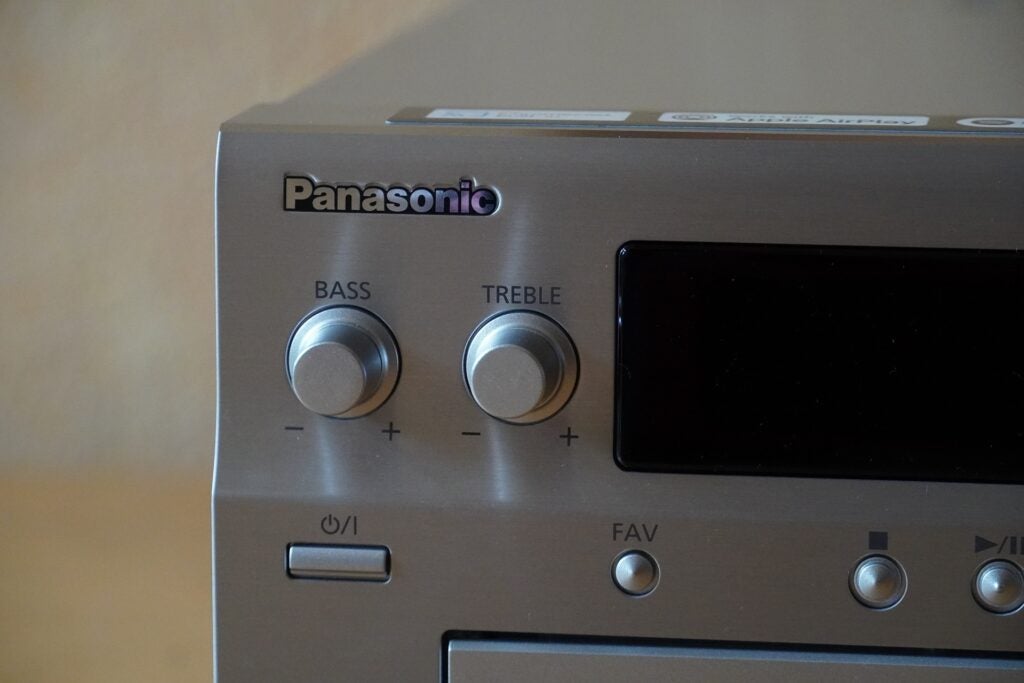
Similar can be said for Jessie Buckley’s turn as Rose Lynn on the Wild Rose soundtrack (CD), the stresses of each note delivered with clarity in her Glaswegian accent, which feeds into the emotion of each track. Whether it’s one that requires a fair amount of power (Country Girl) or more solemn tone (Peace In This House), the Panasonic puts in a well-judged performance.
Moving to more simpler tracks and the guitar strums that open Ry Cooder’s soundtrack to cult 80s film Paris Texas (CD) have a precise and natural pitch to the guitar strings, each note allowed to linger before the next one begins. This adds to the album’s rather elegiac and wistful tone.
A twist of the volume dial adds more energy and size to the Panasonic’s delivery, but with some fast-paced tracks it can come across as a little formulaic and one-paced. It isn’t a particularly large-scale performance that dominates a room (at least without trading subtlety for bombast), nor is it one with huge amounts of power behind it. As such, the SC-PCMX802 is a system you’ll want to get cosy to than sit far away from.
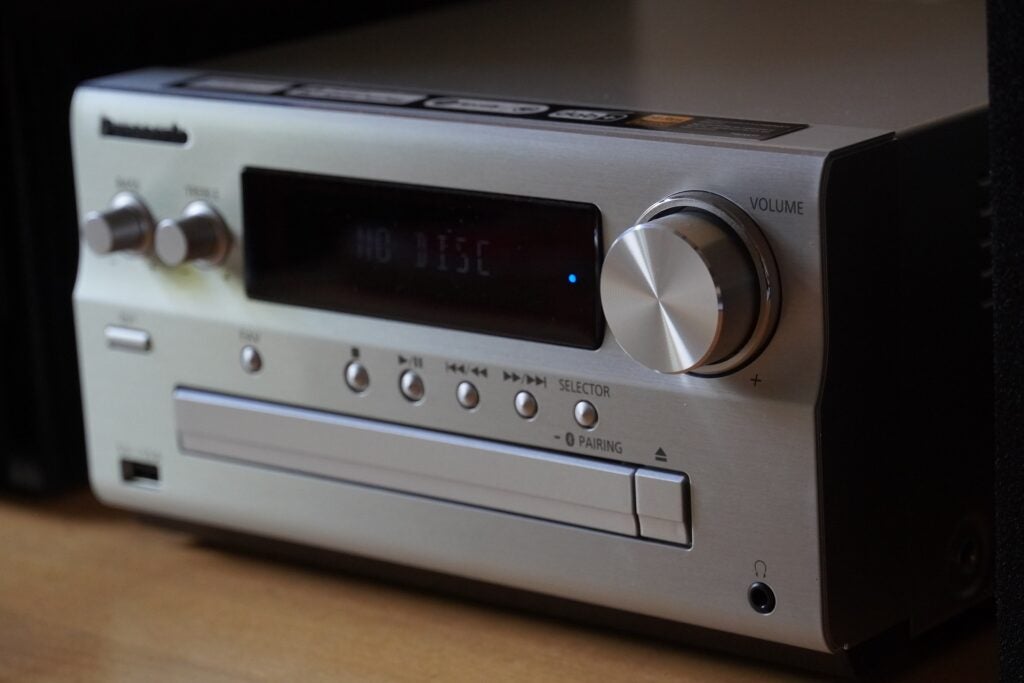
Latest deals
Should you buy it?
If you want hi-fi convenience in a small form factor CD, radio, Hi-Res playback and streaming all in one package and with speakers accounted for. That’s pretty convenient.
If you want set-up flexibility If you don’t want to use the speakers that come with the Panasonic, its recommended to use speakers with a 3 – 16 ohm rating. If your speakers don’t fit you likely need to look at another micro system.
Final Thoughts
The Panasonic SC-PCMX802 is a fine micro system – if you’re after a small, Swiss army knife of a system. CD playback and Chromecast offer a smooth, slightly rich presentation that appeals.
As a Hi-Res system, the SC-PCMX802 is reliant on Chromecast and USB playback. The lack of any higher-quality Bluetooth codec or MQA means you won’t get higher-quality audio through music streaming services such as Tidal. Still, you get a very confident sounding system at an asking price that appeals.
How we test
We test every system we review thoroughly over an extended period of time. We use industry standard tests to compare features properly. We’ll always tell you what we find. We never, ever, accept money to review a product.
Find out more about how we test in our ethics policy.
Tested for two weeks
Tested with a range of sources
FAQs
A hi-fi micro system is a compact unit, usually packaged with a pair of matching speakers, that can play CDs, stream music and features a DAB/DAB+ radio tuner.
Yes you could through its optical connection. There isn’t a HDMI input to receive a signal from a TV, however.
The PMX802 is not MQA compatible, playing streams as ‘normal’ audio.



